#fern fossil
Explore tagged Tumblr posts
Text



Pennsylvanian Shale, 2024, cotton fabric, thread and batting
#my art#art#queer artist#fiber art#quilt#fossil#fern fossil#plant fossil#plant#paleontology#paleoart
640 notes
·
View notes
Text
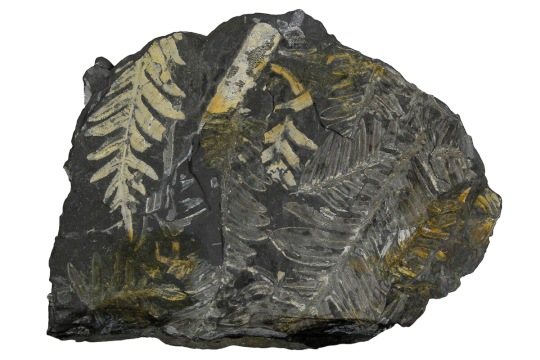

6.3" Fossil Seed Fern (Alethopteris) Plate - Pennsylvania
#Pennsylvanian#alethopteris#fossil seed fern#fossil fern#fern fossil#seed fern#fossil plate#plant fossil#plant#fossil#fossils#paleoblr#png#transparent#paleontology#prehistoric#ferns
89 notes
·
View notes
Photo

British Carboniferous Fossil Plants & Leaves – Coal Measures UK, Authentic Paleozoic Specimen
An outstanding collection piece featuring authentic British Carboniferous Fossil Plants and Leaves from the classic Coal Measures deposits of the Carboniferous Period, approximately 310–320 million years ago. These fossils were formed in the lush, swampy forests that once dominated prehistoric Britain, now preserved as detailed impressions in shale or siltstone.
The fossil assemblage typically includes various species of ferns (Neuropteris, Alethopteris), seed ferns (Pecopteris), lycopsids (Lepidodendron, Sigillaria), and horsetails (Calamites), representing the dominant vegetation of the time.
Fossil Type: Fossilised Plant Impressions (Leaves, Stems, and Fronds)
Geological Age: Carboniferous – Pennsylvanian Subperiod (Westphalian Stage)
Formation: Coal Measures (Upper Carboniferous)
Depositional Environment: These plants grew in lowland tropical wetlands and coal-forming swamps. Rapid burial by sediment in oxygen-poor environments led to remarkable preservation of delicate plant structures in fine-grained muds and silts.
Morphological Features:
Detailed vein and frond impressions
Often preserved as flat carbon films or positive/negative moulds
Fronds may show branching patterns and midrib structures
Notable:
Fossils from the iconic British Coal Measures
Includes representatives of extinct tree-sized club mosses and seed ferns
Excellent for educational use, fossil collectors, and display
Actual specimen photographed – scale rule = 1cm per square
Authenticity: All of our fossils are 100% genuine natural specimens and are supplied with a Certificate of Authenticity. The photo displays the exact specimen offered. Please refer to the image for full dimensions.
This fossilised record of ancient forest life offers an incredible window into Earth’s prehistoric ecosystems. A classic and educational specimen from the Carboniferous coal-forming landscapes of the UK.
#Carboniferous fossil#fossil plant UK#fossil leaves#British coal measures#fossil flora#fern fossil#fossilised plants#Carboniferous flora#Paleozoic fossil#UK plant fossil#coal forest fossil#genuine fossil specimen#fossil collector item
2 notes
·
View notes
Text


made a linocut stamp of the mighty coelacanth
#my favorite living fossil :) with an ammonite cameo#i made a fiddlehead fern and ginkgo leaf too but they didn’t come out as good#coelacanth#mine
201 notes
·
View notes
Text

Amazing Neuropteris (seed fern) Fossil with Exceptional Preservation From Grundy County, Illinois. Age: Pennsylvanian (~300 m.y.a.).
Photo 📷 juarezfossil/IG
189 notes
·
View notes
Text
going to be devastatingly real. i don’t care about the paleozoic. i don’t care about the cambrian explosion. the carboniferous rainforest collapse is MAYBE intriguing at best and goddamn if i don’t get tired hearing about fucking lepidodendron “trees.” mesozoic and cenozoic always win >>>>
#im just mad and i hate the taxonomy of fossils from the paleozoic#especially plants#i despise ferns#conifers are my only solace god bless u permian araucarians#talk#fun fact y’all the grand canyon has so many paleozoic formations it’s not even funny#kms
89 notes
·
View notes
Text

Neuropteris heterophylla, extinct seed fern. Art-studies from nature. 1872.
Internet Archive
131 notes
·
View notes
Text

Adopt: Fossie $65
Available!
Check out our pinned for rules and inquiries! $5 from every sale goes towards Crips for ESims.
20 notes
·
View notes
Note
If a frilled shark and a fern were to fight each other who do you think would win /genq
hold on i have to google


WTFF ok ok imma be serious here
its gonna have to go to fern bc no way is that shark getting onto land. if this was a tiktaalik vs fern fight that'd be a different story.
but i am giving the win to the fern because she can populate land like crazyyy and have strong defense system meanwhile silly frilled shark is stuck in the water with no good bone structure in its fins
#that frilled shark scared me so much when i googled that... but i wont let first impressions cloud judgements#kudos to frilled shark for being a 'living fossil' i love evolution#but also fern over here also old as hell#fvedyasks#rervraiilstew <3
9 notes
·
View notes
Text

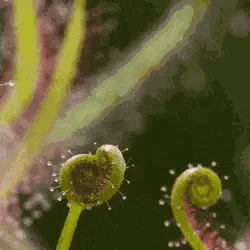
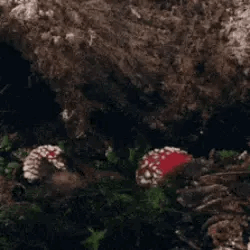

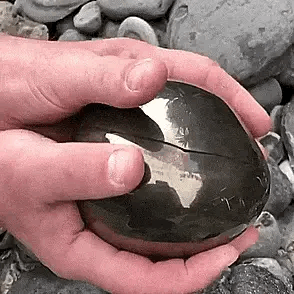
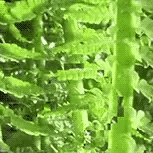
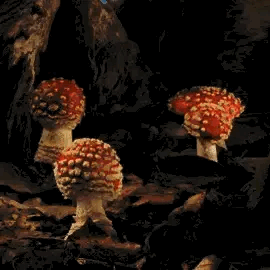
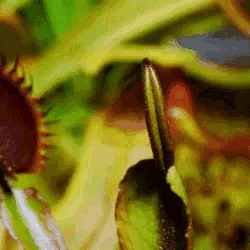

A self-indulgent life and death inspired stimboard requested by @spacedustmantis !!!
🌿🍄🌿|🍄🌿🍄|🌿🍄🌿
#stim#stimboard#fern stim#carnivorous plant stim#fossil stim#mushroom stim#fungi stim#amanita stim#Timelapse stim#plant stim#stone stim#flower stim#toasted stims#self indulgent series
102 notes
·
View notes
Text

fossil fanatic design for people like me!! had fun adding the tully monster one - i love a good mazon creek fossil
#my art#digital art#fossils#trilobite#ammonite#shark tooth#mason creek#tully monster#ferns#crinoid#rockhound
617 notes
·
View notes
Text

Natural Tree Fern Leaf Fossil Pennsylvanian
#fern#plant fossil#fossil#fossils#fern fossil#leaf#tree fern#png#transparent#paleontology#prehistoric#plant
26 notes
·
View notes
Photo

British Carboniferous Fossil Plants & Leaves – Coal Measures UK, Authentic Paleozoic Specimen
An outstanding collection piece featuring authentic British Carboniferous Fossil Plants and Leaves from the classic Coal Measures deposits of the Carboniferous Period, approximately 310–320 million years ago. These fossils were formed in the lush, swampy forests that once dominated prehistoric Britain, now preserved as detailed impressions in shale or siltstone.
The fossil assemblage typically includes various species of ferns (Neuropteris, Alethopteris), seed ferns (Pecopteris), lycopsids (Lepidodendron, Sigillaria), and horsetails (Calamites), representing the dominant vegetation of the time.
Fossil Type: Fossilised Plant Impressions (Leaves, Stems, and Fronds)
Geological Age: Carboniferous – Pennsylvanian Subperiod (Westphalian Stage)
Formation: Coal Measures (Upper Carboniferous)
Depositional Environment: These plants grew in lowland tropical wetlands and coal-forming swamps. Rapid burial by sediment in oxygen-poor environments led to remarkable preservation of delicate plant structures in fine-grained muds and silts.
Morphological Features:
Detailed vein and frond impressions
Often preserved as flat carbon films or positive/negative moulds
Fronds may show branching patterns and midrib structures
Notable:
Fossils from the iconic British Coal Measures
Includes representatives of extinct tree-sized club mosses and seed ferns
Excellent for educational use, fossil collectors, and display
Actual specimen photographed – scale rule = 1cm per square
Authenticity: All of our fossils are 100% genuine natural specimens and are supplied with a Certificate of Authenticity. The photo displays the exact specimen offered. Please refer to the image for full dimensions.
This fossilised record of ancient forest life offers an incredible window into Earth’s prehistoric ecosystems. A classic and educational specimen from the Carboniferous coal-forming landscapes of the UK.
#Carboniferous fossil#fossil plant UK#fossil leaves#British coal measures#fossil flora#fern fossil#fossilised plants#Carboniferous flora#Paleozoic fossil#UK plant fossil#coal forest fossil#genuine fossil specimen#fossil collector item
0 notes
Text
Plants Surviving the Worst Mass Extinction
ESP Version ITA Version

When we think of mass extinctions, we often imagine the meteorite impact that killed the dinosaurs at the end of the Cretaceous, 65 million years ago. However, the greatest extinction event occurred between the Permian and Triassic periods, around 250 million years ago, eliminating over 96% of marine species and about 70% of terrestrial vertebrates. But how did plants fare?
According to a study conducted by University College Cork, the University of Connecticut, and the Natural History Museum of Vienna, plants did not experience a mass extinction comparable to that of animals. Nevertheless, their communities were severely impacted or even completely destroyed due to extreme climatic conditions: intense heat, drought, depletion of the ozone layer, widespread wildfires, and contamination by toxic heavy metals.
The study analyzed fossils from the Sydney Basin in eastern Australia, which at the time was located near the South Pole. Researchers gathered sedimentological data (physical, chemical, and depositional characteristics of sediments), biostratigraphic data (fossil distribution within rock layers), and stable carbon isotope ratios from organic matter, reconstructing environmental conditions of that era.
Fossils revealed that the first plants to recolonize devastated landscapes were conifers. Unfortunately, these conifers did not survive a subsequent period of extreme heat known as the Late Smithian Thermal Maximum, which lasted around 700,000 years. In this hostile environment, stress-tolerant, cosmopolitan lycophytes, similar to modern clubmosses, became dominant. Later, during a cooling event (Smithian-Spathian event), large and unusual seed ferns (such as "umkomasialea") emerged, gradually forming more stable and lush forests. These plants laid the foundation for the Mesozoic dinosaur era and the immense fern-dominated forests that persist in our collective imagination.
This research underscores the importance of protecting modern forests because, as the authors emphasize, "forests eventually recover, but the extinction of individual species is forever." Complete ecosystem recovery takes millions of years, and preserving today's plants ensures stability for future food webs and climate systems.
Pic by Fabien Monteil from Pixabay
Source
#Drops of Science#latest news#science#natural sciences#plants#conifers#fern#survival#extinction#fossils#research#Australia#geology#paleobotany#paleontology#mass extinction#Permian-Triassic#climate change#ancient forests#biodiversity#Earth's history
3 notes
·
View notes
Text



Happy National Fossil day!! All of these beauties found in Pennsylvania :)
34 notes
·
View notes
Text


Spinosaurus Aegyptiacus 🦖☄️
Was thinking of getting another tattoo and sketched something ideal of what I’d like, the Spinosaurus is one of my favorites, I might draw a Utahraptor design too eventually :)
I’ve been posting a lot of Regretevator lately so this is something different
Tags Below »»———————————————————
#art#digital art#dinosaur#spinosaurus#spinosauridae#spinosaurus aegyptiacus#tattoo#tattoos#tattoo inspiration#fossils#fossil#prehistoric#ferns#magnolia
9 notes
·
View notes